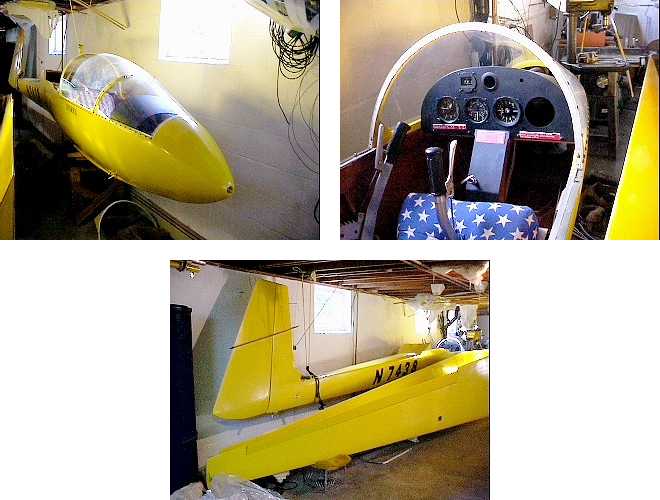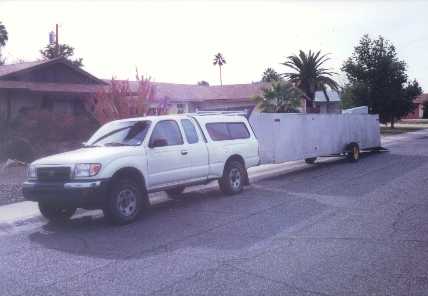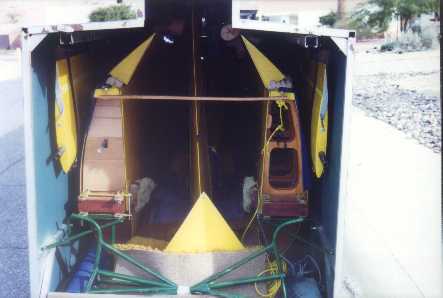
The loaded trailer (back in Phoenix).
We learned that every thing had a purpose (except for the mystery sticks - still don't know what they did...) and a small place to fit into. . We finished loading well after dark and came back to start the journey to Phoenix the next day.
The weather was very nice for the tow back to Phoenix, for December. It took us three days to get the nearly 2000 miles.
A couple of weeks later, when the intermittent winter rains stopped (it DOES rain in the desert!) the wings were put on the glider for the first time in 25 years. I was assisted by my wife, Gwen, and friends Harry Hiller (my best friend in Phoenix) and Bruce Thompson.

The fuselage coming out into the sunlight after 25 years!
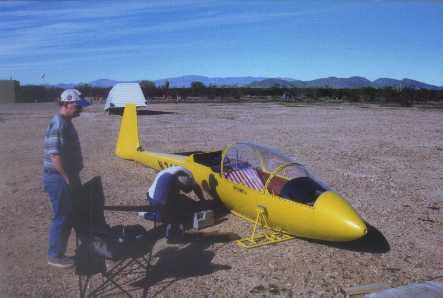
The tire needed some air attention. The fuselage rests on its stand. Yes, it goes away when it comes time to fly!

It did not take long for a crowd of sailplane pilots to gather, nodding approval and making the appropriate pilot noises over the old ship.

The first wing is out of the trailer and moving toward the fuselage. Each wing is 25 feet long.
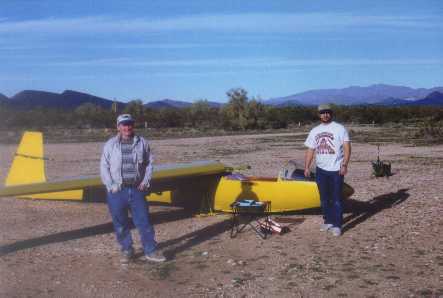
Harry and I pose for a picture after attaching the right wing.
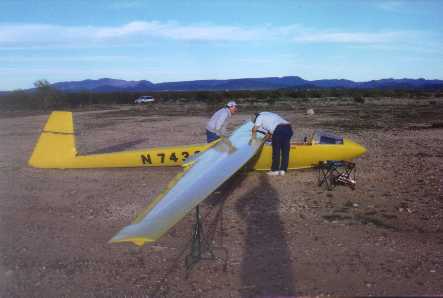
The second wing went on - Harry and I are installing the attaching hardware.
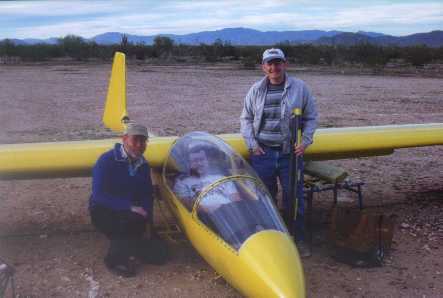
Bruce, Paul, and Harry after the wings are installed. It is a fine fit. I think I will keep it!

This is the detail of the right wing as it attaches to the fuselage. The flap and aileron controls are not hooked up yet.

The instrument panel. Compass on top - altimeter, airspeed, and variometer on the bottom. The red placards have information about maximum speeds and weights that are allowable.
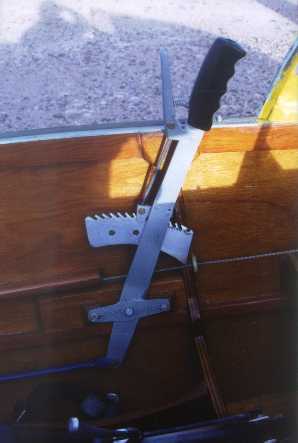
The flap handle and its detents. The builder did a spectacular job.
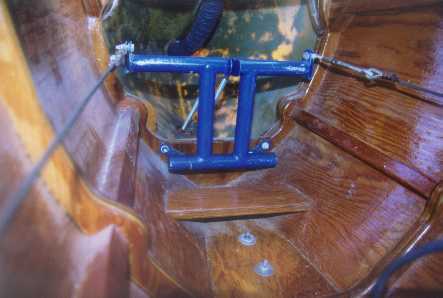
The rudder pedals and cables. The varnish, which protects the wood, is clearly seen to reflect the light from the camera strobe.
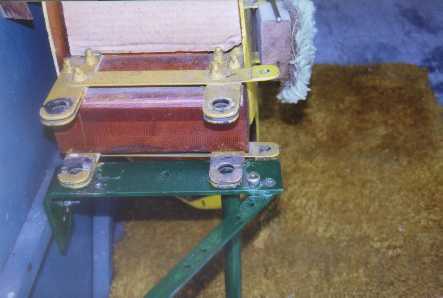
The right wing root in the trailer. The green bracket holds the end of the wing while it is in the trailer. It comes out before taking the wing out. Both wings have to be set off of the stabilizing peg outboard (as shown) to allow the fuselage to enter or exit. It is a really tight fit trailer!

And then it got dark. Caving headlamps really work well in the trailer...
The condition (annual) inspection by a certified mechanic (Thanks Nick!) and the
Airworthiness Inspection by the FAA have been completed. When the paperwork is
done, there will be more pictures of the glider in the air!
Created 21 February 2001.
Last updated 18 November 2011.
Copyright 2001-2011 by Paul R. Jorgenson
